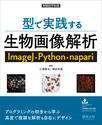- [SHARE]
- ツイート


本連載が大幅加筆して単行本『ハーバードでも通用した 研究者の英語術』になりました!
本連載の主旨・概要は「はじめに~ひとりで学ぶ英語の心得」をご覧下さい
第3回 アブストラクトの書き方③
~【実践編】優れたアブストラクトへの道のり
第1ドラフトをさらに磨きあげる
第1ドラフト〔例文-2〕でも十分内容は伝わるのですが,無駄な部分を省いてより洗練した形にしていきます.
まず,第2~4センテンスでの重複するフレーズを整理していきます.第2センテンスの問い「whether any other types of immune cells could mediate these responses in place of T- and B- lymphocytes 」は,第3センテンスの不定詞節と重複しますので,第2センテンスは省略できます.第3・第4センテンスは,
①It is commonly believed that only T lymphocytes and B lymphocytes expressing recombination-dependent antigen-specific receptors mediate contact hypersensitivity responses to haptens. ③To determine whether any other types of immune cells could mediate these responses in place of T- and B-lymphocytes, here we study contact hypersensitivity responses in mice devoid of T cells and B cells. ④We found that mice lacking T cells and B cells demonstrated substantial contact hypersensitivity responses to 2,4-dinitrofluorobenzene and oxazolone.
のように一部改変して双方を残してもいいですし,字数制限がある場合などは第3センテンスも省略して,
①It is commonly believed that only T lymphocytes and B lymphocytes expressing recombination-dependent antigen-specific receptors mediate contact hypersensitivity responses to haptens. ④Here we found that mice devoid of T cells and B cells demonstrated substantial contact hypersensitivity responses to 2,4-dinitrofluorobenzene and oxazolone.
とし,第1センテンスを「この通説が実験的にどの程度証明されているのか? それをこの研究で検証する」という「問いと目的」を含めたものであるとみなし,すぐに第4センテンスの方法と研究結果に飛ぶという表現方法をとってもよいでしょう.
第5~8センテンス(主要な研究結果)は,ほぼこれで良しとしますが,第7センテンスの主語Contact hypersensitivity responsesは重複を避けるために,These responsesとしても良いでしょう.
最後の意味付けの文章は,
These results further our understanding of the mechanisms underlying contact hypersensitivity responses and the requirements for successful novel anti-inflammatory therapies
と若干表現を直して残してもよいですし,字数制限の問題や,過剰な拡大解釈を避けたい場合には省いてもよいでしょう.
ここでは,非常に単純化しましたが,実際には第1ドラフトの出来は人それぞれで,おそらくここで示した例文-2ほどこなれていないことが多いでしょう.私は数日にわたり10回以上セルフ・エディティングをして書き直しを重ねて表現を磨くことを心がけています.研究室を始めて自分で論文を書き始めた頃には50回は書き直していたと思います.
プロフィール

- 島岡 要(Motomu Shimaoka)
- 大阪大学卒業後10年余り麻酔・集中治療部医師として敗血症の治療に従事.Harvard大学への留学を期に,非常に迷った末に臨床医より基礎研究者に転身.Mid-life Crisisと厄年の影響をうけて,Harvard Extension Schoolで研究者のキャリアパスについて学ぶ.現在はPIとしてNIHよりグラントを得て独立したラボを運営する.専門は細胞接着と炎症.
- ブログ:「ハーバード大学医学部留学・独立日記」A Roadmap to Professional Scientist
- 過去の連載:プロフェッショナル根性論 online supplement material
Photo: Liza Green (Harvard Focus)

- ジョー・ムーア(Joseph Moore)
- 1999年から2004年までハーバード大学医学部のフォンアンドリアン教授のオフィスマネージャーとして,グラントの編集とポスドクと学生のための論文や申請書の作成と編集に関わる.
現在,フリーのライター兼エディターとして,International Piano and Classic Record Review等にクラシック音楽に関する記事の執筆,サイエンスの分野ではグラント申請,論文作成,プレゼンテーションの英文校正や編集を行っている. - ウェブサイト:http://www.bandoneoneditingservices.com/



















